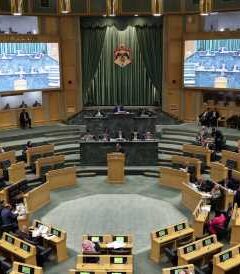Home » Middle East »
With the fighting suspended, assessing the destruction in Gaza.
With the daily bombardment by the Israeli military aimed at Hamas militants embedded in civilian neighborhoods at an end, at least for the moment as a fragile cease-fire held, residents across Gaza were able to assess for the first time on Friday the scale of the damage wrought by the latest round of conflict.
For tens of thousands, the first step was leaving the United Nations-run schools where at least 75,000 had sought shelter from Israeli airstrikes.
Some families emerged clutching bags and blankets, bound at last for the homes they hoped were still standing.
Others had none left to go back to.
Officials in Gaza said that about 1,000 residential units across the coastal strip had been destroyed and five residential towers brought to the ground, along with an as-yet-uncounted number of businesses.
The bombing also leveled three mosques in Gaza, damaged 17 hospitals and clinics and dozens of schools, wrecked its only Covid-19 testing laboratory, and cut off fresh water, electricity and sewer service to much of the enclave.
The Israeli aerial and artillery campaign killed more than 230 people in Gaza, many of them civilians, according to the Gaza health ministry. More than 4,000 rockets had been fired at Israel from Gaza since May 10, killing 12 people, mostly civilians.
The damage in Gaza is not only a personal disaster for thousands of people and a humanitarian concern for the territory’s two million residents, but also the fertile soil out of which the next military conflict could grow.
“It’s mind-boggling to me that anyone in Israel, or anywhere, thinks that having an impoverished, besieged, angry, young, traumatized, starved population in Gaza is somehow in anyone’s interest, or could in any way produce stability or safety for anyone,” said Khaled Elgindy, a senior fellow at the Middle East Institute. “It just means it’ll happen all over again.”
On Friday, rescue work was underway. Workers digging in what appeared to be a destroyed Hamas tunnel found five bodies and pulled about 10 survivors from the rubble.
Gaza is blockaded by its two neighbors, Israel and Egypt, with Israel saying that it must tightly control access to prevent Hamas from gaining military capabilities and Egypt acquiescing for its own complex political and security reasons.
That means Gazans’ ability to import and export from the territory, get access to medical care outside it or fish off its coast is limited. Unemployment tops 50 percent. Almost no one can leave.
After the last war, in 2014, Israel and Hamas were scheduled to discuss easing the blockade in exchange for disarming Hamas, but little progress was made. The damage then was far more extensive.
Source: Read Full Article


